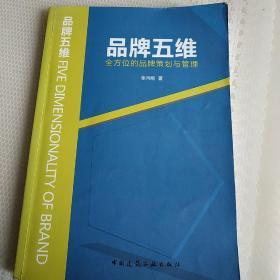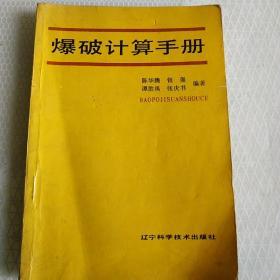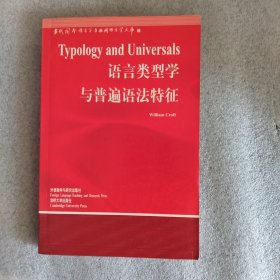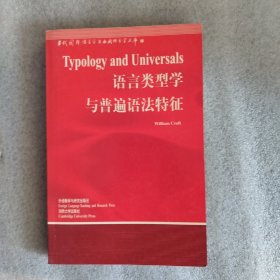
语言类型学与普遍语法特征
¥ 15 5.2折 ¥ 28.9 八五品
仅1件
四川成都
认证卖家担保交易快速发货售后保障
作者W. Croft
出版社外语教学与研究出版社
出版时间2000-10
版次1
装帧平装
上书时间2024-11-10
- 在售商品 暂无
- 平均发货时间 8小时
- 好评率 暂无
- 店主推荐
- 最新上架
商品详情
- 品相描述:八五品
- 正版内容干净无划线详细请看图实物拍照
图书标准信息
- 作者 W. Croft
- 出版社 外语教学与研究出版社
- 出版时间 2000-10
- 版次 1
- ISBN 9787560019437
- 定价 28.90元
- 装帧 平装
- 开本 其他
- 纸张 胶版纸
- 页数 319页
- 【内容简介】
-
Comparison of the grammars of human lagnuages reveals systematic patterns of variation. research in typology and universals attempts to uncover those patterns. to formulate the universal constraints on language that define those patterns, and to seek explanations for the universals. In this volume, the first of its kind, william Croft provides the reader with a comprehensive introduction to the method and theory used in typology-universals research. together with an overview of basic grammatical differences between languages. He discusses theoretical issues ranging from the most fundamental-on what basis can the arammars of diverse languages be compared?-to the most absttact-what is the role of fuctional and historical explanation of language universals? -and gives extensive illustration from the world's languages. several case studies also provide extended examples of the methodologies applied to specific problems. As well as explicating basic concepts established in the last thirty years. current areas of typological research are thoroughly covered (including some discussion of phonological typology). The author demonstrates how complex patterns of cross-linguistic variation. such as hierarchies and prototypes. are built on the basic patterns of implicational universals and markedness. He also draws together contemporary research on cross-linguistic patterns of the form-meaning relation and on universals of language change, and shows how a new approach to limguistic explanation, the "functional-typological" or "dynamic" paradigm, has evolved in the last decade.
This textbook will appeal to scholars and students alike in linguistics and anthropology. - 【目录】
-
Preface by Halliday
Preface and Acknowledgments
Abbreviations
1. Inrtoduction
1.1 Definitions and scope of typology
1.2 Cross-linguistic comparsion
1.3 The problen of cross-linguistic comparablilty
1.4 Non-typological factors and the sampling problen
1.5 Data souces
2. Typological classifivcation
2.1 Intuoduction
2.2 the comcept of a linguistic type(strategy)
2.3 morpholonical typology
3. Inplicational nuversals
3.1 Restrctions on possible lanuage types
3.2 Unrestricted and implicational universals
3.3 Deeper explanations for word-order universals
4. Markedness in typology
4.1 Introduction
4.2 Markedness and inplicational universals
4.3 Criteria for markedness
4.3.1 Stucture
4.3.2 Behavior
4.3.2.1 Inflectional behavior
4.3.2.2 Disrtbutional behavior
4.3.3 Frequency
4.3.4 Neutral value
4.4 Conclusion
5.Grammatical herarchies
5.1 Inrtoduction
5.2 Hierarchies,inplicational universals and markedness
……
6. Prototypes and the interaction of typloogical patterns
7. External motivation and the typology of form-function relations
8. Diachromic typology
9. Linguistic explanation in the dynamic paradigm
Notes
Teferences
Map of languages cited
Author index
Language index
Subject index
Croft:Typology and Universals: Errata
文库索引
点击展开
点击收起
相关推荐
— 没有更多了 —






































以下为对购买帮助不大的评价